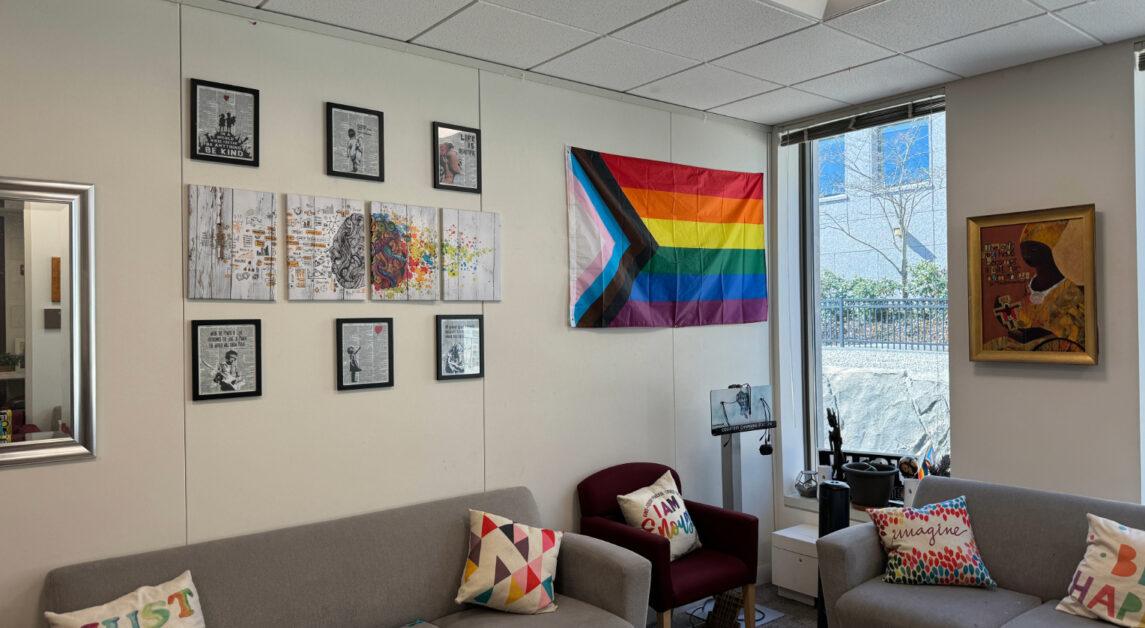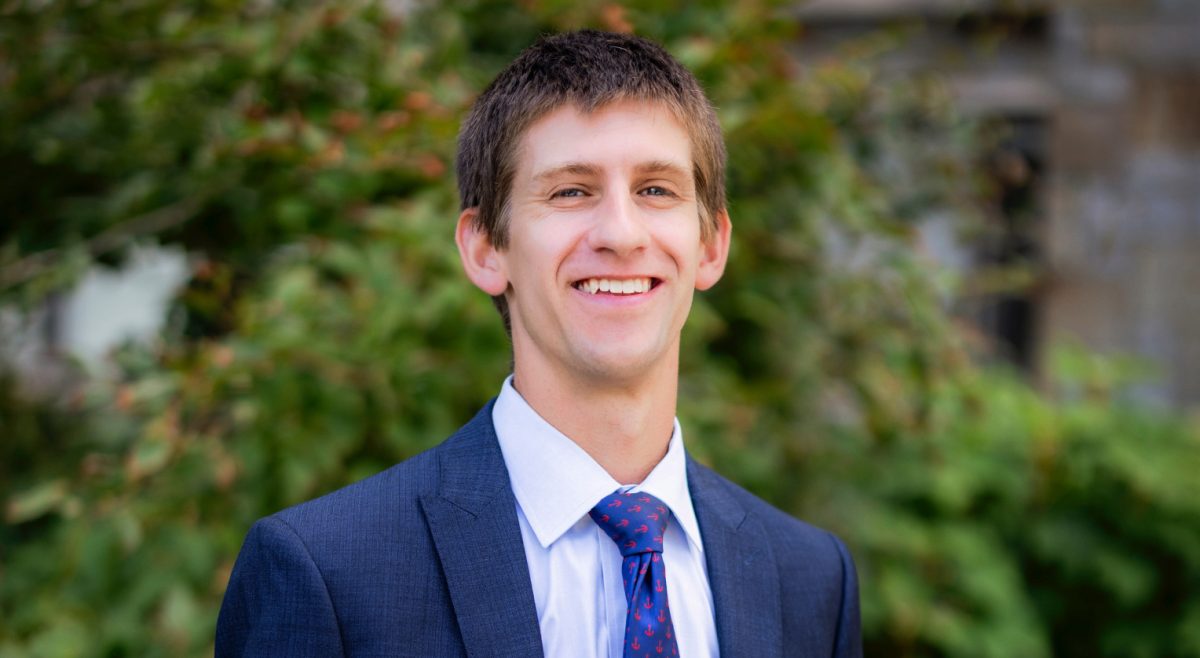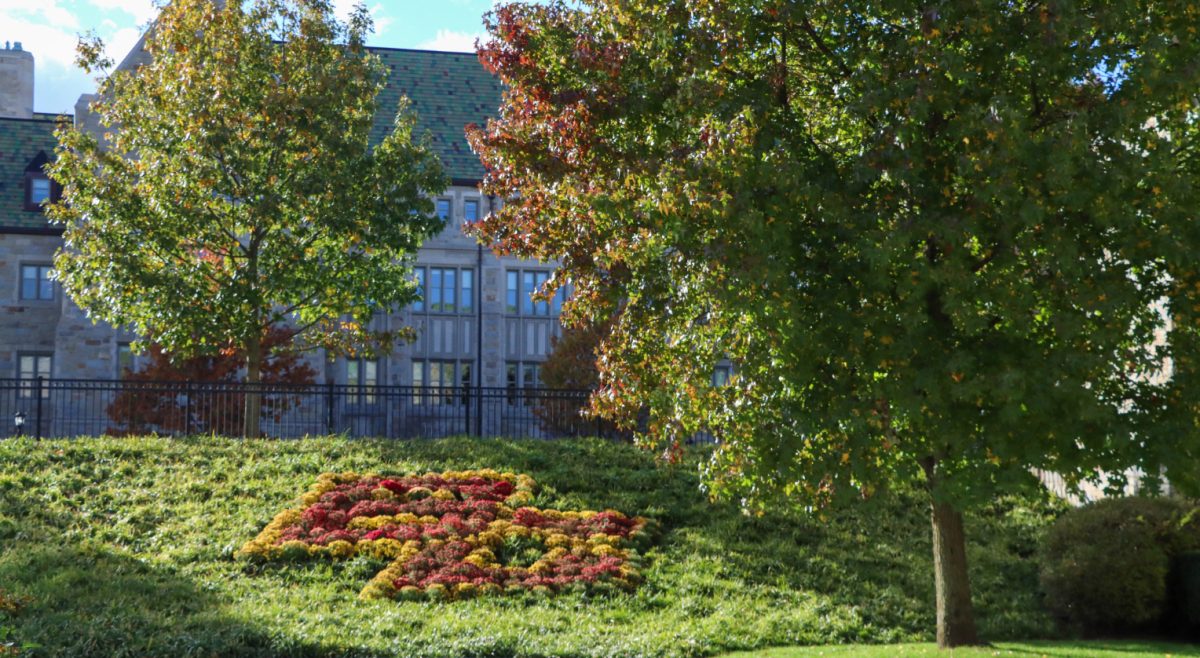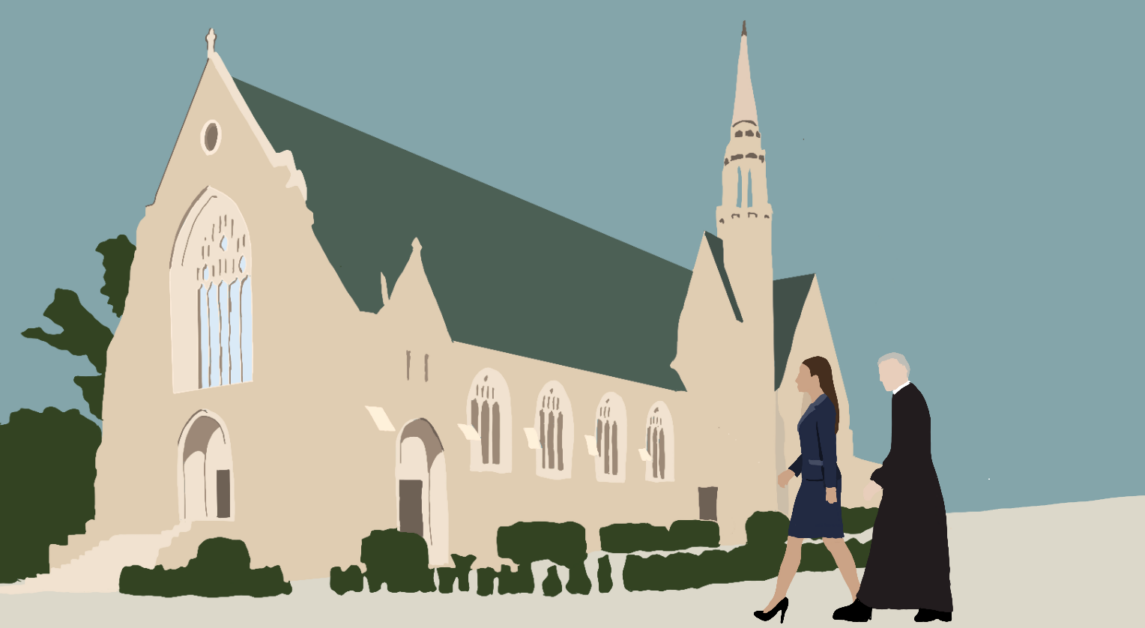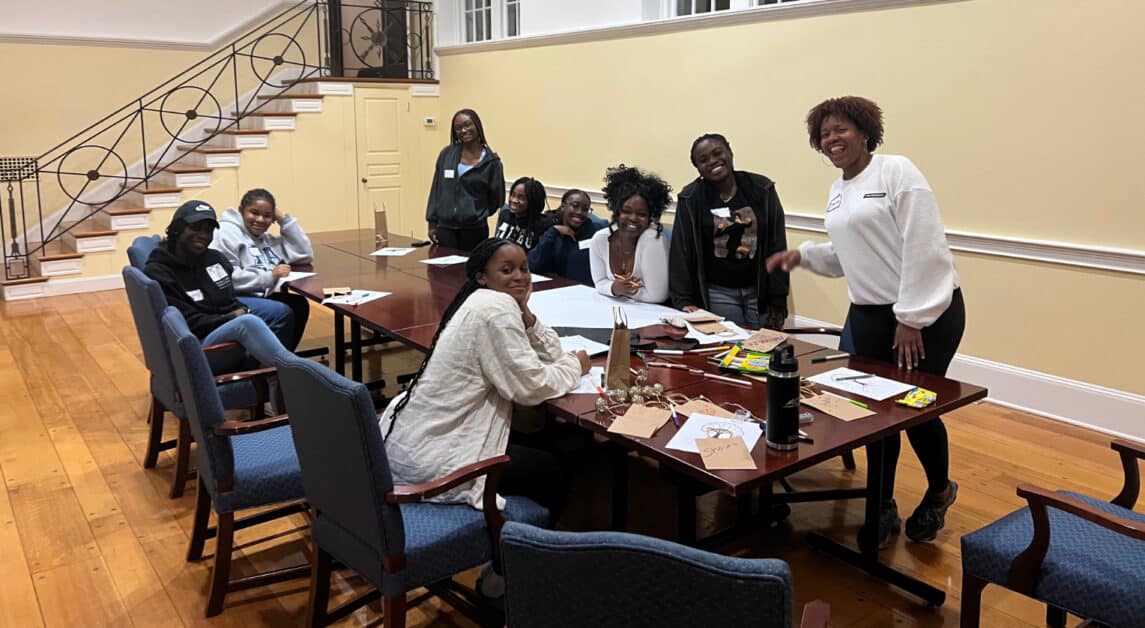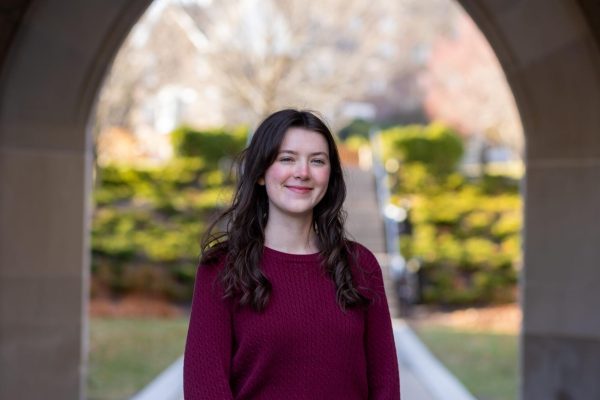Valerie Lewis-Mosley, BC ’79, helped coin the term AHANA—African, Hispanic, Asian, and Native American—popularizing it among the student body during her time at Boston College.
In 1979, it became an official BC acronym through the naming of the Office of AHANA Student Programs, which eventually became the Thea Bowman AHANA Intercultural Center (BAIC).
But today, Lewis-Mosley is disheartened and concerned by recent administrative decisions regarding the BAIC.
Though the BAIC has historically been a space and resource for students who identify within the AHANA acronym, BC officially integrated resources for LGBTQ+ students into the center at the beginning of the 2023-24 academic year.
“To me, it was a limitation of addressing [LGBTQ+] needs by tagging it on to the AHANA context,” Lewis-Mosley said. “They have a big enough endowment where they could have broadened meeting the needs of both our AHANA legacy and established an even broader development for the LGBTQI community.”
The History of AHANA and the BAIC
In 1968, former University President Rev. Michael P. Walsh, S.J., initiated the Negro Talent Search Program to recruit prospective Black students to BC.
In an effort to become more inclusive to all students of color on campus, BC hired a full-time counselor dedicated to minority students and rebranded the program as the Office of Minority Student Programs in 1979.
At the time, Lewis-Mosley was troubled by the use of the word “minority,” she said.
“The issue was the language,” Lewis-Mosley said. “To minimize the language of ‘minority’ over a group of students of color was thought to be pejorative, from my personal perspective.”
In response, Lewis-Mosley and her peer Alfred Feliciano, BC ’81, popularized the term AHANA among fellow students.
In 1979, the fall after Lewis-Mosley graduated, Feliciano aided in renaming the Office of Minority Student Programs as the Office of AHANA Student Program, a space and resource for students of color on campus, Lewis-Mosley said.
A decade later, BC rededicated the office to Thea Bowman, a nun who spent her life teaching children to embrace their identities and appreciate cross-cultural learning.
In April 2022, Vice President for Student Affairs Shawna Cooper Whitehead announced plans to restructure the BAIC to include resources for LGBTQ+ students—a plan that included dropping the AHANA acronym from the office’s name.
While the plan was initially paused after feedback from students and alumni, it resumed in April 2023, retaining the AHANA acronym. During the summer of 2023, BC formally integrated LGBTQ+ programming into the center and hired Ira Kirschner as an assistant director of the BAIC to spearhead LGBTQ+ initiatives.
An AHANA Founder’s Cause for Concern
Lewis-Mosley said she is concerned that the integration of LGBTQ+ resources into the BAIC will result in decreased resources for both groups.
“If you have a pie that can only be divided in eight parts, and you’ve already divided it, and you keep including more into that one limited pie, you’re not serving the needs of either community,” Lewis-Mosley said.
According to Cooper Whitehead, the recent integration has not decreased existing support for students of color.
“Since this transition, we have NOT reduced support or resources for our students of color and have remained cognizant of providing a sense of belonging for students from historically marginalized communities,” Cooper Whitehead wrote in a statement to The Heights.
Lewis-Mosley also said LGBTQ+ students deserve specially tailored solutions to their needs.
“I think it was a disservice to our LGBTQI community in a way because it took the onus of really expanding and broadening the conversation,” she said.
BC consistently rejected proposals for an LGBTQ+ resource center for nearly two decades preceding the transition of LGBTQ+ support into the BAIC.

Students React to the Integration
Some current BC students have concerns regarding the housing of LGBTQ+ and AHANA resources under the same roof.
Isabella Sampaio, MCAS ’25, said she was frustrated by BC’s decision to combine the support for two minority groups on campus.
“I feel like it’s easy for BC to be like, ‘Let me just group two minority groups,’ but I feel like it takes away from the AHANA aspect of it,” Sampaio said. “I feel like when you’re putting another resource center in a resource center that’s already being used for something else, I feel like it beats the purpose of both of them.”
Habibatou Sarr, MCAS ’26, said she thinks the integration was an insufficient solution to the need for identity-based support on campus.
“I feel that BC’s decision to combine LGBTQ+ and AHANA resources was a surface-level attempt to address complaints,” Sarr said. “Combining two minority groups into an existing space has its limitations and doesn’t fully serve the needs of either group.”
Sarr also said she doesn’t know of many LGBTQ+ peers who have visited the BAIC since the integration.
“While some students have accepted the integration, many still feel it was the wrong move,” Sarr said. “In my experience, few LGBTQ+ students visit the BAIC, highlighting a need for separate spaces as they may feel that they’re ‘intruding.’”
Layla Saenz, MCAS ’25, also said the combination of resources poses a potential challenge for non-AHANA students who identify as LGBTQ+.
“I can’t speak on it personally, but I imagine it’d be difficult … for some queer students who aren’t people of color, entering that space. They might feel like they’re overstepping in a way,” Saenz said.
Serving An Intersectional Boston College
Nonetheless, Cooper Whitehead said the mixed model of support is important for students with intersectional identities and was designed with student input in mind.
“Throughout my time at BC, I have been constantly engaging with our students, many of whom have emphasized their intersectional identities,” Cooper Whitehead wrote in her statement. “They have shared their desire to have a welcoming place where they can meet with fellow students from all backgrounds and orientations. Their input was part of our decision to expand the BAIC’s outreach.”
Kirschner said he had an especially positive experience since beginning his role organizing LGBTQ+ programming on campus.
“I’m learning a lot from the students I have been working with, and I’m looking forward to the continuing partnership and collaboration between the BAIC and the LGBTQ+ students we are supporting,” Kirschner wrote in a statement to The Heights.
Yvonne McBarnett, director of the BAIC, did not respond to The Heights’ request for a statement at the time of publication.
Aidan Seguin, MCAS ’25 and chair of the Queer Leadership Council (QLC), said a significant amount of pressure is placed on the QLC’s student leaders to foster LGBTQ+ community on campus.
“There’s a lot of pressure on [QLC],” Seguin said. “If our group disappeared, the majority of queer things happening on campus would disappear alongside it.”
Seguin also said the integration process has not been seamless.
“I think from what I’ve been hearing, it doesn’t seem like the integration has gone as smoothly as desired,” Seguin said. “I work closely with Ira … and I definitely can see the effort from his side, but I just don’t know how effective that effort has been.”
Nevertheless, Seguin said he supports the integration of LGBTQ+ resources.
“It’s not necessarily like there’s a part of the BAIC—in my mind—that’s being taken away from this, or like anything is being removed,” Seguin said. “I think that having these two things in this space just increases the chances that more intersectional events will happen.”
Kirschner said the integration of LGBTQ+ resources into the BAIC is productive for students who identify with both the AHANA acronym and as a part of the LGBTQ+ community. He described the integration as both a combination and an addition.
“It is a combination, because for some students who hold an identity that includes LGBTQ+ and AHANA – those cannot be separated, and they benefit from receiving all of their identity related resources in a holistic, complete way,” Kirschner wrote in his statement. “It is an addition because all LGBTQ+ students can now receive identity-related resources at the BAIC, without taking away from AHANA students who have been receiving identity related resources from the BAIC for many years.”
Kirschner said he has only received positive feedback in response to the integration.
“Everyone I have spoken to and interacted with has expressed excitement about the BAIC now supporting LGBTQ+ students and other marginalized students, in addition to AHANA students,” Kirschner wrote in his statement.
Kirschner also said the BAIC plans to expand its LGBTQ+ resource offerings going forward.
“Next year we plan to do even more – like an LGBTQ+ student summit in the fall semester, LGBTQ+ wellness programs, tabling across campus to raise awareness about LGBTQ+ resources and programming at BC, programs about LGBTQ+ and religious identity,” Kirschner said.
By expanding the resources offered through the BAIC, Seguin said he hopes administrators can lighten the pressure that QLC student leaders feel to curate queer spaces on campus.
“I hope that, as the next years come, maybe they can get more grad assistants or more student workers to actually help them build up programming,” Seguin said. “Right now the programmatic load is much greater on students, which is not the place where you want to be when students are already struggling.”
Sampaio said the present conflict surrounding identity-based resources on campus reflects BC’s reluctance to evolve its resources.
“I just feel like BC needs to change with the times,” she said. “I feel like other Catholic schools around are moving with the times.”

